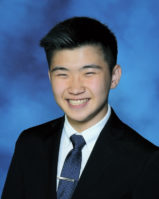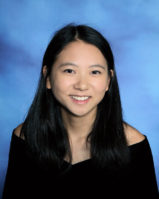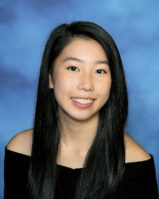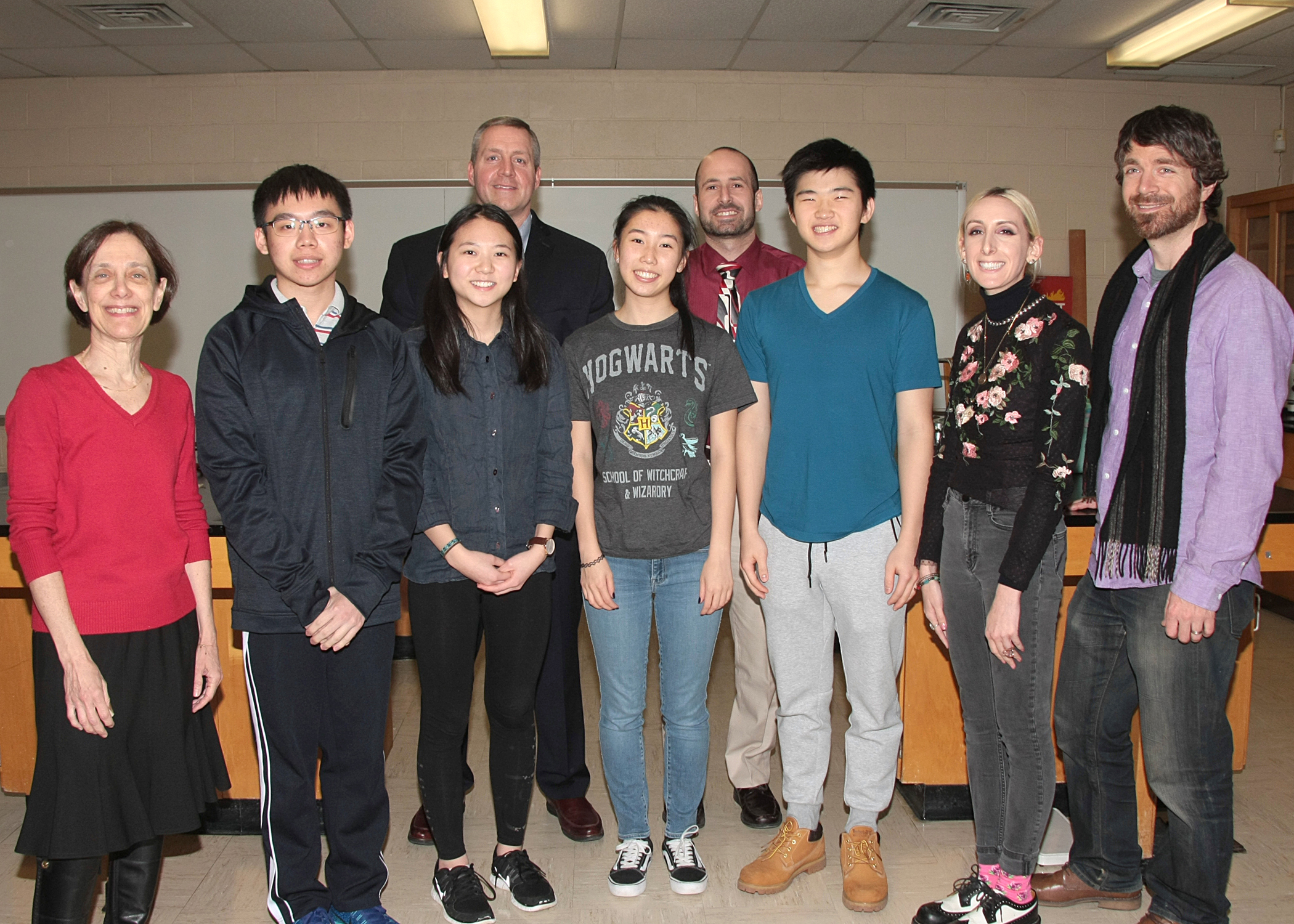Four students from Great Neck South High School are among the nine high schoolers from Great Neck who have been recognized in the Regeneron Science Talent Search, one of the oldest and most prestigious science contests in the country.
Their Regeneron projects studied a possible treatment for a type of cancer, dark matter’s effect on the universe, how subatomic particles interact and using algae to purify water.
They are Daniel Kim, 18, Eric Kuang, 17, Cindy Wang, 17, and Michelle Xing, 17.
Daniel Kim

When Daniel Kim first joined the research program in Great Neck South High School, he said he was not sure what he wanted to do.
But then he found the chance to work in a laboratory focusing on lung cancer, Kim said, which eventually helped lead him into his Regeneron-recognized research into a different cancer: neuroblastoma.
“It was an instant moment for me,” Kim said. “I was completely immersed in it.”
His research involved an alternative treatment for neuroblastoma, a cancer that forms in nerve tissue. Kim said that, essentially, he and other scientists worked to change T-cell receptors to make them more specific to the ailment.
While the treatment is still developing, Kim said it is possible it could someday be used to help people with this late-stage cancer.
“The technique I was working on, it’s still in its primitive phase,” Kim said. “It could potentially be applicable to treatment.”
Overall, Kim said doing research has been fun and satisfying – the recognition has just been icing on the cake.
“You’re able to say I did this on my own, I was able to get far, and I was able to get recognized for it,” Kim said.
Outside of school, Kim said he swims and plays the cello.
Kim said he intends to study molecular biology or biochemistry and possibly pursue immunotherapy or oncology in the future.
Michelle Xing

Michelle Xing first thought about water purification in eighth grade, after hearing about lead-contaminated water in Flint, Michigan, and Long Island’s pollution plumes.
“Lead contamination is a huge problem in society right now,” Xing said.
Xing’s project, which also qualified her as a Siemen’s semifinalist, hopes to address that problem. Working with a professor at Stony Brook University, Xing said she extracted nanofibers from algae and increased the surface area to try boosting how much it absorbs.
Xing said that while there are costs for the treatment, it is a low cost one with great potential.
“The actual material is very very cheap, but it’s abundant,” Xing said. “I think it’s such an attractive material.”
Xing also noted that working in research has provided an opportunity to “bring light” to certain situations and how science can help alleviate them.
Xing, who has also enjoyed music throughout her life, said she hopes to study civil or environmental engineering in college.
Eric Kuang

For his project, Eric Kuang analyzed data obtained from distance measurements of astronomical events with a special simulation and statistical sampling algorithm to study the possible impact of dark matter on the movement of the universe.
It was a project that began in 10th grade over the summer, Kuang said, but his inspiration goes back to when he took an interest in the universe as a child.
He is also following in the footsteps of his grandparents, who were research scientists, Kuang said.
“I think their experience really inspired me in going into research,” he said.
Kuang, who was recently accepted by Stanford University, said he would most likely major in physics.
“I think for all of us, we can agree that without our mentors, without our teachers, without the school’s science department, we would not be able to achieve what we have,” Kuang added.
Outside of school, Kuang said he enjoys reading and playing golf.
Cindy Wang

Cindy Wang’s project, using data from the Relativistic Heavy Collider, measured an electrical effect called the chiral magnetic effect from a dense subatomic soup of particles called the quark-gluon plasma.
This study of the particles generated when heavy ions collide could help broaden people’s understanding of the universe itself, Wang said.
“This sheds light on the most fundamental interactions between our particles, and also tells us about the Big Bang and our early universe,” Wang said.
Wang said that getting recognition for the project, which also earned her a slot as a Siemen’s semifinalist last year, is “really great.” But, she said, this has not been the only reward.
“I think it’s really great that we got this recognition, but I think that even without this recognition, it’s been really awesome to do something that we may be committing to doing in the future,” Wang said.
“I think that the win just makes it cool, but even without the win, it was still pretty awesome,” she added.
Wang said she wants to pursue something related to physics in college and help “solve the world’s problems by applying this knowledge.”
Wang said that aside from research, she also golfs and does ballet.
“Ballet and research are the two things I enjoy the most,” she said.



